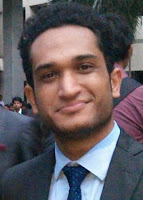The Indian Air Force (IAF) formerly known as the Royal Indian
Air Force(RIAF) came into being after India achieved in 1947 from
the British rule. The Royal prefix was dropped in 1950 when India
became a republic. Since 1950 till today this unit of the Indian Armed Forces
has never looked back, and has and continues to march forward towards
sophistication and state of the art technology.
Since independence IAF had been in four wars with Pakistan and
one with China. India might have lost war with China due to improper
military planning, but it had only grown stronger since then. Machines may have
been old at that time but the valor and determination of these sons and
daughters of the motherland have never faded, had never shaken and never will.
With 5 Operational Commands and 2 Functional Commands the
Indian Air Force stands tall among the strongest Air forces of the world.
With motto “Touch the Sky with
Glory” the IAF currently holds 25 squadrons out of
the original 42 planned. The top commanders of the IAF had taken the fast
depleting rate of the Squadrons due to old fighter aircraft's decommissioning
very seriously and as a result India successfully struck up the Rafale
aircraft deal with France. With the 4th generation fighter aircraft, Rafale to join IAF
in 2016 IAF is all set to boost up the squadrons and increase its might. In
this era of modern warfare, The Indian Air Force has not limited itself to just
4th generation fighter planes, the Fifth Generation
Fighter Aircraft(FGFA) program in collaboration with Russia will provide
India with Sukhoi PAK-FA which will enable the IAF to prove its mettle when
time need be.
Click here to Read:
All you need to know about India Air Force Part 1
All you need to know about India Air Force Part 2
Click here to Read:
All you need to know about India Air Force Part 1
All you need to know about India Air Force Part 2
Latest Acquisitions of the Indian
Air force
- · Dassault Rafale –
With
the Indo French Deal getting wheels the Indian Air force has agreed upon
settling with 36 Rafale planes in
the Fly away condition to be inducted by 2017 and the remaining to be
introduced after getting manufactured from HAL under the transfer of Technology
Programme. Let us look at the various features why The Indian Air Force agreed
to choose this as the final contender from the list of various other aircrafts.
Engines:
The
Two seater Rafale B is fitted with two Snecma
M88 engines. Each engine is capable of producing up to 50 kN of dry thrust and 75 kN with afterburners. The M88 engines
enable the fighter plane to super cruise while carrying four air to air
missiles and one drop tank.
Cockpit:
The
cockpit is designed with keeping in mind the principle of Data Fusion. This
enables the aircraft to automatically
prioritize information and to display that information for easier and
faster control by the pilot. Another
very amazing feature of this Digitized cockpit is an integrated direct voice
input (DVI) system. The DVI system enables the pilot to control most of the
functions of the aircraft through direct voice commands. The DVI can choose
among the various armaments, the radar modes and controlling navigational
functions.
Radar:
Rafale
is equipped with thales RBE2 scanned
multi-mode radar. The radar is designed for increased visibility for the
aircraft for close combat and long range interception. The radar also generates
high definition real time map of ground for flight and testing.
This is just the starting friends , there is lot more with what now our Indian Air force is equipped with. Read the next part to know about the new helicopters, missile systems and what not is there with IAF.
Click here for General Awareness Series: Latest Acquisitions of the Indian Air force - Part 2
About the Author:
Shekhar Tanwar is a computer science engineer who is working with a renowned MNC and is a die heart defense aspirant. Guitar is his passion and he is very firm believer of physical fitness. This article is a way to help defense aspirants to present his critical views on the topic, on the forum so that collective exchange of thoughts can take place.
(Reviewed and edited by Jayendra Pratap Singh) |




No comments:
Post a Comment